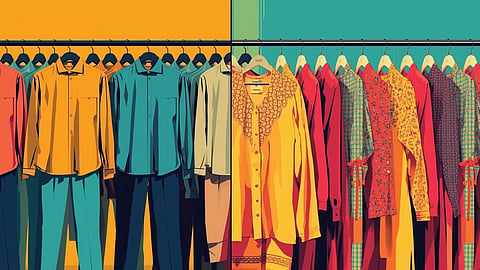

This article investigates whether men's and women's clothing genuinely differ in quality or if women pay more due to the so-called 'pink tax'. By examining fabrics, stitching, and pricing of similar garments, we uncover truths and debunk myths prevalent in Indian fashion. Practical examples and brand insights help readers make informed choices and understand factors influencing price disparities beyond gender.
In India’s dynamic fashion landscape, a persistent belief is that women’s clothing is not only priced higher but also varies fundamentally in quality compared to men's. This notion is often linked to the 'pink tax'—an informal term describing how products marketed to women cost more than similar ones for men. But is there a tangible difference in the quality of garments, or is it mostly a pricing strategy? Let's explore.
Understanding the 'Pink Tax' in Fashion
The pink tax refers to price disparities between men’s and women’s products that don’t reflect differences in production costs. In clothing, the myth suggests that women’s apparel is either made with inferior materials or, paradoxically, more expensive despite similar construction. Indian consumers frequently notice that a basic women’s shirt or kurta can cost more than a comparable men’s shirt. But is quality the reason?
Comparing Construction and Materials
When examining similar basic garments, such as T-shirts or shirts, the construction for men’s and women’s clothing is often very similar. Both use comparable fabrics like cotton, polyester blends, or linen. For instance, a plain cotton T-shirt for men and women from a mass-market brand like Mufti or Allen Solly would typically share the same material quality and stitching standards. Differences might arise in cuts or added design elements—for example, women’s clothes may include darts, pleats, or embroidery, which can add to production complexity.
However, these design variations are about style and fit, not material quality degradation or enhancement. Fabrics remain consistent across genders in mid-range and premium brands, debunking the myth that women’s clothes are inherently lower quality.
Pricing Variations: What Drives Them?
The price difference often stems from factors unrelated to material or construction quality:
1. Design Complexity: Women’s garments may have more intricate designs, trims, or embellishments, increasing manufacturing costs.
2. Market Demand: Women’s fashion tends to have higher variety and seasonal turnover, affecting pricing strategies.
3. Marketing and Branding: Brands might position women’s clothing as premium, justifying higher prices.
4. Sizing and Inventory: Managing a wider range of sizes and styles for women can increase operational costs.
Practical Example: The Classic Shirt
Consider a classic formal shirt. A men’s plain cotton formal shirt might cost ₹1,500, while the women’s equivalent with additional styling (like pleats or fitted tailoring) could be priced at ₹1,800. Both use similar fabric quality and stitching techniques. The extra ₹300 often covers design and marketing rather than quality deterioration.
The Role of Indian Brands
Brands like FabIndia and Biba focus on quality ethnic wear for both men and women. Their products use similar handloom fabrics and traditional craftsmanship across genders, often at comparable price points. This further illustrates that quality differences are not gender-based but product and design-based.
How to Make Smart Choices
Indian consumers can avoid overpaying by:
- Comparing fabric types and GSM (grams per square meter) to assess material quality.
- Checking stitching quality and finishing rather than relying on price tags.
- Considering unisex or men’s versions if fit and style are suitable, as they sometimes offer better value.
- Shopping during sales or from brands with transparent pricing.
Conclusion
There is no fundamental quality difference between men’s and women’s clothing in India; the so-called pink tax largely arises from design complexity, marketing, and consumer demand rather than inferior or superior materials. Women often pay more, but this is not because their clothes are made poorly or differently in quality — it’s a pricing and fashion industry phenomenon. Being aware helps shoppers make informed decisions and challenge stereotypes embedded in fashion pricing.
By scrutinizing garment construction and materials, Indian consumers can see beyond myths and choose clothes that offer true value regardless of gender.
